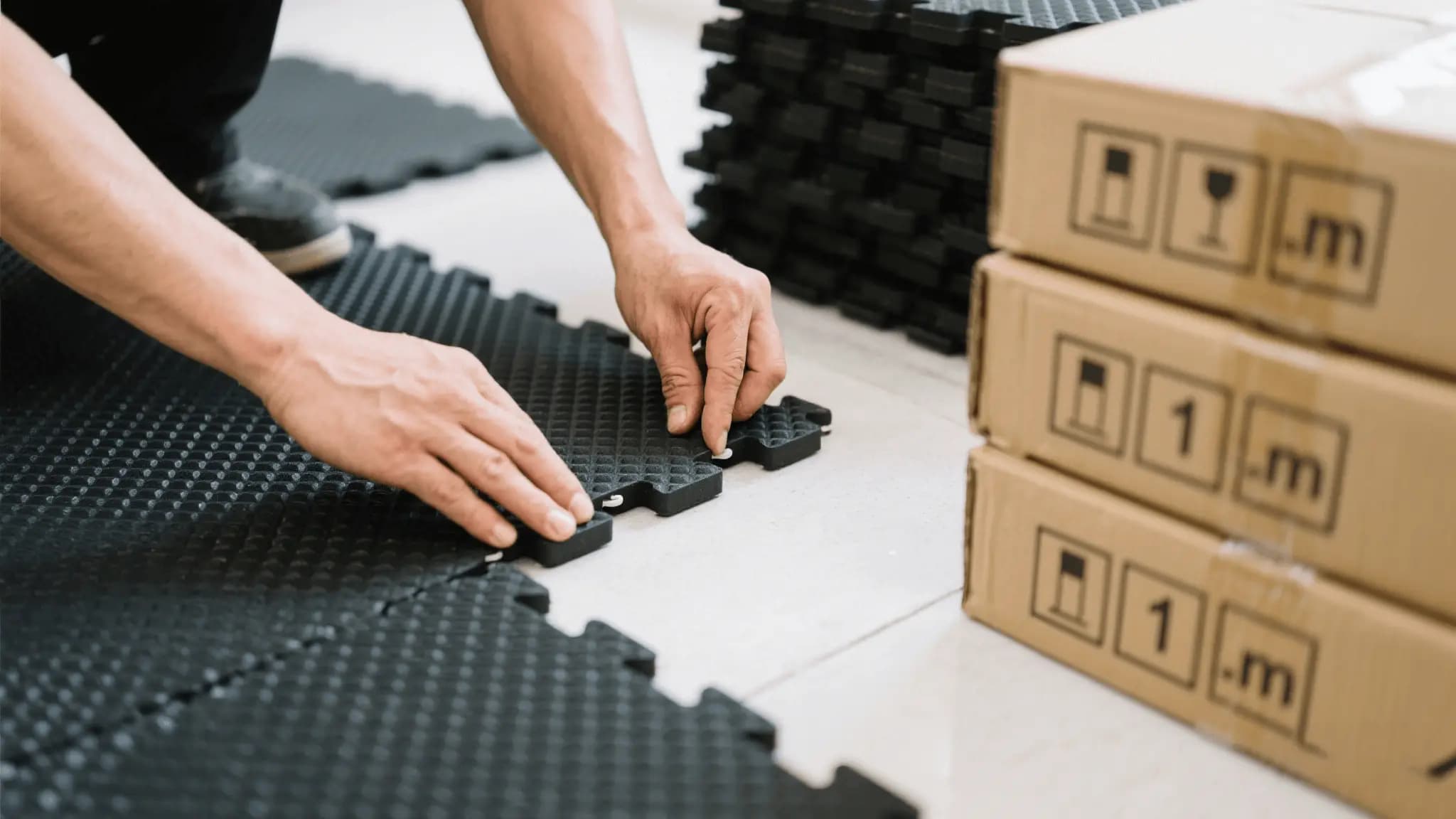
What Are Rubber Rolls?
Rubber rolls are long, continuous sheets of rubber flooring, typically available in widths of 4 feet and custom-cut lengths. They offer a seamless, professional look and are ideal for large surface areas such as fitness centers, industrial floors, and sports facilities.
Advantages of Rubber Rolls
- Seamless appearance with minimal joints
- Ideal for high-traffic and heavy-use areas
- Cost-effective for large commercial installations
- Improved sound insulation and shock absorption
Disadvantages of Rubber Rolls
- Heavier and more difficult to install
- May require adhesive for permanent installation
- Harder to replace a damaged section
What Are Interlocking Rubber Tiles?
Interlocking rubber tiles are modular tiles that snap or puzzle together, allowing for flexible and DIY-friendly installations. They are ideal for smaller spaces or areas that may need future reconfiguration, such as personal training studios, offices, or retail spaces.
Advantages of Interlocking Tiles
- Easy to install without adhesives or professionals
- Modular and replaceable—just swap out damaged tiles
- Great for temporary or semi-permanent flooring
- Available in various colors, thicknesses, and textures
Disadvantages of Interlocking Tiles
- More seams, which may be visible in high-end applications
- Less stable under extreme heavy loads
- Generally more expensive per square foot
Key Factors to Consider
Here’s a quick comparison based on common commercial flooring needs:
| Factor | Rubber Rolls | Interlocking Tiles |
|---|---|---|
| Installation | Requires adhesive and tools | DIY-friendly, no adhesive needed |
| Area Size | Best for large, open spaces | Best for small or segmented areas |
| Durability | High durability under heavy traffic | Durable, but not ideal for very heavy machinery |
| Maintenance | Harder to replace damaged sections | Individual tiles are replaceable |
| Cost Efficiency | More cost-effective in bulk | Higher cost per square foot |
Best Use Cases by Industry
- Fitness Centers: Rubber rolls for main workout floors, tiles for functional training zones
- Retail Stores: Interlocking tiles for easy reconfiguration and spot replacement
- Industrial Facilities: Rubber rolls for large machinery areas
- Offices: Tiles for flexible flooring and aesthetic variety
Conclusion: Which Should You Choose?
The choice between rubber rolls and interlocking tiles depends on your project’s size, usage, and flexibility needs. For large, permanent installations—go with rubber rolls. For smaller or modular spaces, interlocking tiles offer convenience and ease of maintenance.
Not sure which is right for you? Contact our team for personalized recommendations and free quotes for your commercial rubber flooring needs.
